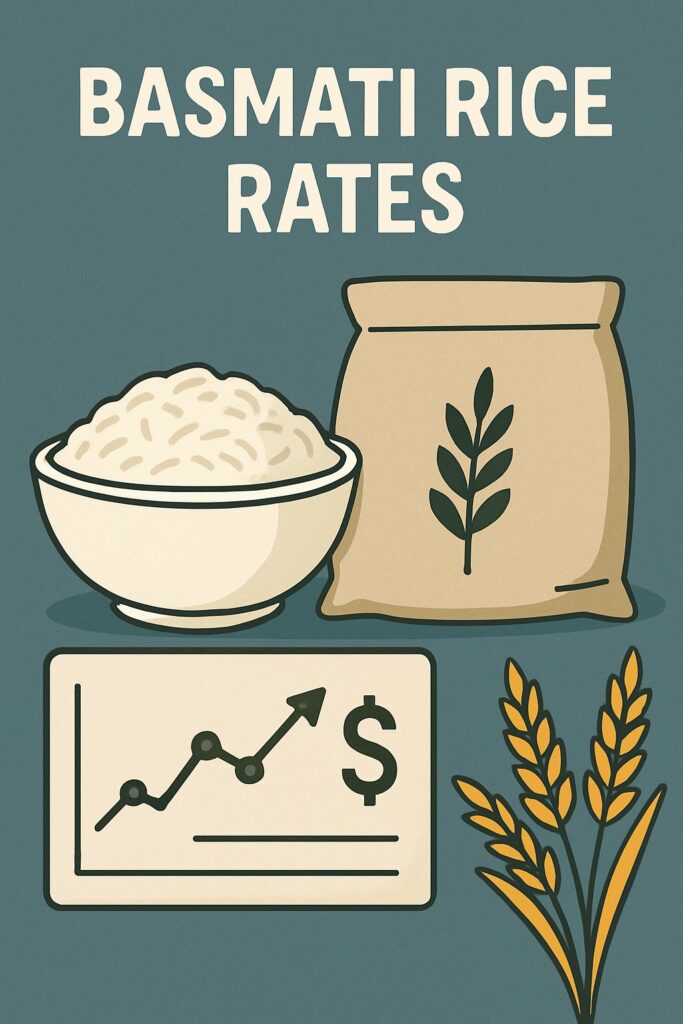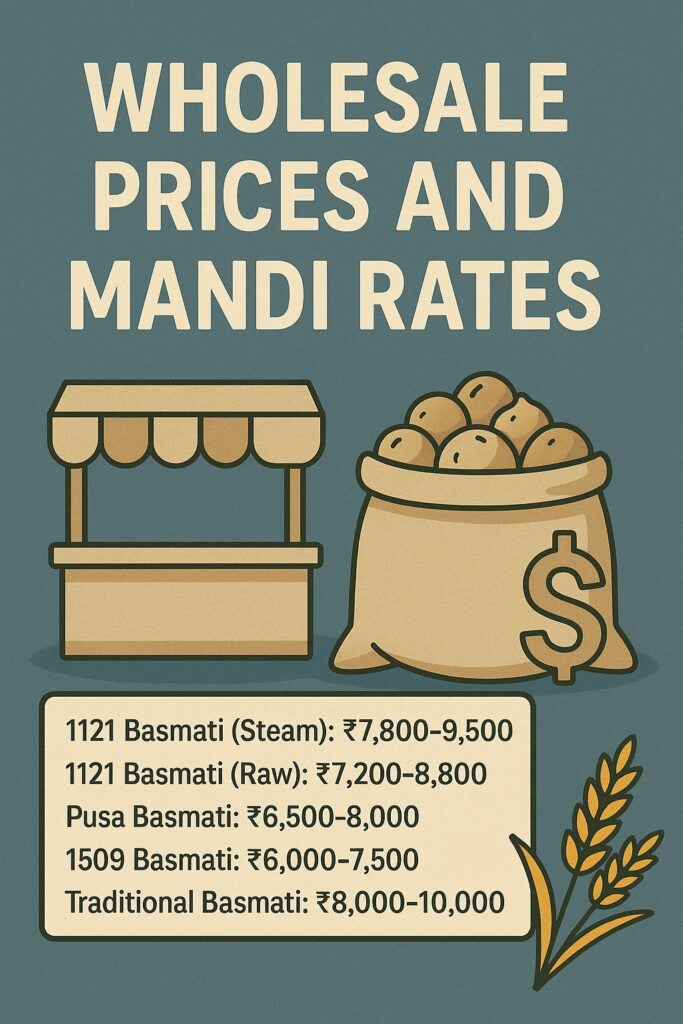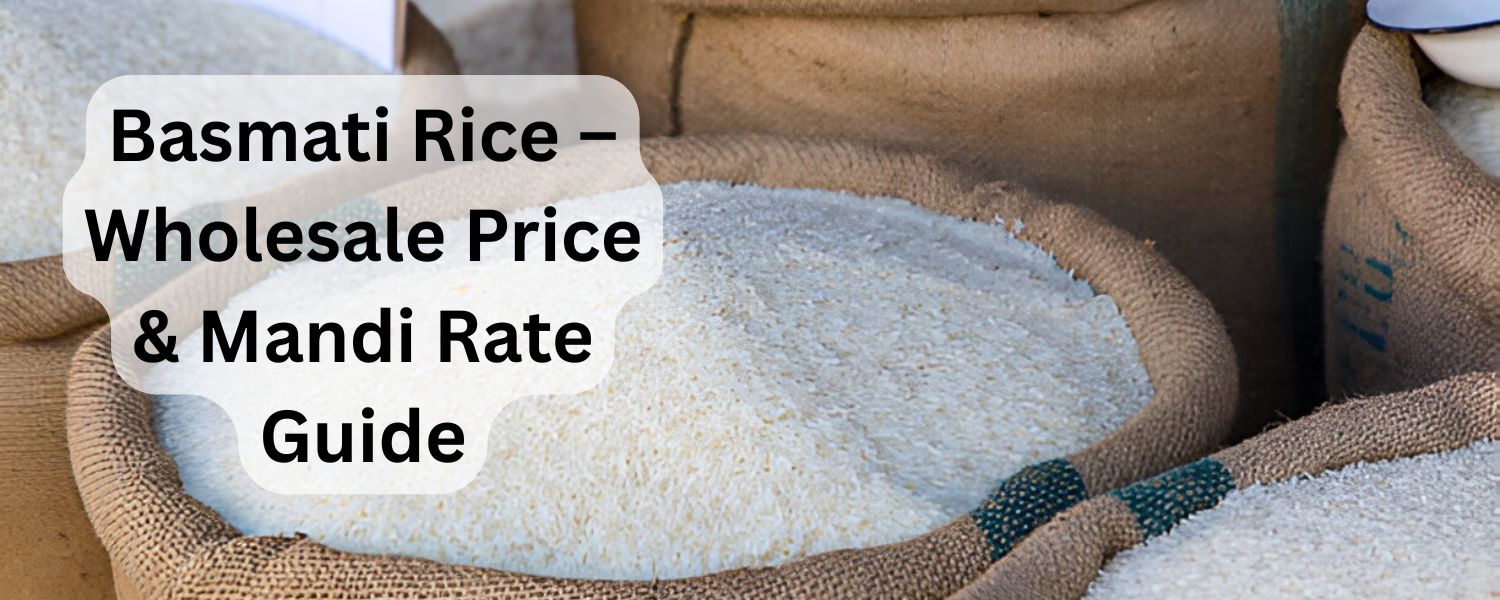Looking at the features of such long grains, their fragrance, and the pen-cooled elite, one can perhaps consider that Basmati rice is the mainstay of many homes and, to a large extent, it forms part of many global cuisines. For a trader, retailer, or consumer, it is imperative to understand the wholesale and mandi prices of Basmati rice because each will inform the decision-making process. What drives these prices, the trends in the market as far as Basmati rice is concerned, and some tips for buying into the wholesale and mandi markets, comprise a few of the topics we will be covering in this article.
Factors that Determine Basmati Rice Rates Newspaper
These are few reasons why the wholesale and mandi rate of Basmati rice will differ.
Type of Basmati Rice: Different varieties exist under the heading of Basmati, which includes the 1121, Pusa, Traditional Basmati, and 1509. Usually, premium varieties such as 1121 Basmati have a price that is more than the others because of its superior quality of grain length and aroma.
Harvest Season: In India, Basmati rice is harvested between October and December. Generally, the price touches the lowest level during this harvest period because the available supply is abundant, and thus it increases in the off-season months.
Geographical Location: Mandi rates differ from one state to others like Punjab, Haryana, Uttar Pradesh, and Uttarakhand in which Basmati is highly grown. Transport costs and local demands are also affecting such difference.
Quality and Processing: Quality and processing, like grain length, purity, moisture content, and steam, raw, or parboiled type, will define the price of Basmati rice. High-quality, well-processed rice attract premium costs.
Export Demand: India is a global Basmati rice exporter to Saudi Arabia, Iran, and the UAE. Strong export demand boosts domestic prices.
Government Policies: Apart from this, market rates can also be affected from time to time because of Minimum Support Prices (MSP), export tariffs, and subsidies.
Changing Market Dynamics: Wholesale prices will also be affected by fluctuations in supply chains, fuel prices, and trader margins

Present Wholesale Prices And Mandi Rates (April 2025)
The Basmati rice price also depend upon variety, quality, and region within India in April 2025. The indicative range of wholesale and mandi prices of some selected Basmati varieties is given below (price per quintal i.e.,100 kg):
1121 Basmati (Steam): ₹7,800-9,500
It is famed for its extra-long grain and premium quality. The rice is most cherished in the domestic and export markets.
1121 Basmati (Raw): ₹7,200-8,800
Less processed compared to steam, raw 1121 is preferred for its natural taste.
Pusa Basmati: ₹6,500-8,000
A high-yielding variety with a good aroma, suitable for bulk purchasing.
1509 Basmati: ₹6,000-7,500
It is an earlier-maturing and cost-effective variety that is frequently bought in a budget.
Traditional Basmati: ₹8,000-10,000
This variety is cherished for its original taste and mostly used in premium preparations.
Note: These are indicative prices based on prices of major mandis like Karnal (Haryana), while rates are also based on market trends of Amritsar (Punjab) and Bareilly (Uttar Pradesh). Rates are, however, subject to some small variations depending on the mandi where sale happens, quality of the produce, and terms of trade.

Mandi Rates-checking Procedure
What are the best ways to get information about mandi rates for Basmati rice?
e-NAM Portal: The National Agriculture Market (e-NAM) provides real-time information on mandi prices across the country. Prices can be filtered by state, commodity, and variety.
Local Mandis: Daily price updates can be obtained from the big mandis, such as Karnal, Taraori, and Amritsar, either by personal visit or through phone calls.
Agmarknet: This is the government website providing detailed prices of agricultural commodities including Basmati rice.
Trader Networks: You may find WhatsApp groups and online forums of rice traders, which will help you get hold of all current rate updates and trends.
Market Apps: Market-related applications Kisan Suvidha and AgriApp provide price alerts and connect users with agents operating in the respective mandis.
Secrets to Buying Basmati Rice Wholesale
Price Comparisons at Mandis: Prices can vary significantly between mandis within Punjab, Haryana, and Uttar Pradesh. For example, Karnal has good price levels for 1121 Basmati.
Check for Quality: Always check for grain length, aroma, and moisture content of the rice. Sample it before buying in bulk.
Remember to Negotiate: Better relationships with reliable suppliers translate into better prices, especially with large orders.
Know the Processing Type: Choose raw, steam, or parboiled basmati according to your clientele or end use.
Export Trends: If the demand in exports goes up, the domestic prices may also go up too. One must consider the global market news.
Ensure Storage: Prices tend to fall post-harvest on Basmati rice. Buy and store it in large quantities to reduce costs.
Problems in Basmati Rice Trade
There will always be some problems that Basmati buyers and sellers face:
Price Fluctuation: The price changes very quickly with the change of export policy or weather conditions.
Adulteration: Some suppliers mix inferior varieties of rice with Basmati, which spoils credibility and pricing.
Increased logistics cost: Higher fuel prices and transportation costs increase the final price to buyers.
Regulations Altered: Any export bans or changes in MSP can throw the market totally out of gear.
Conclusion
With the Basmati rice still one of the high-value commodities in the import and local markets, its price at wholesale remains determined by quality, market demands, and regional factors, including mandi rates. Keeping oneself updated about the current rates, peeking into the dynamics of the market, and developing good rapport with suppliers are certain factors that determine how good a buyer is. Wholesalers dealing in retailing for local sale or traders on the lookout for prospective exports need to keep abreast with the Basmati rice business to sustain profit potential.
Related Posts
1718 Golden Sella Basmati Rice
1718 Golden Sella Basmati Rice is one of the most premium varieties of rice widely admired for its aromatic essence and its quality of preventing

Difference Between Steam Rice vs Raw Rice: Which is Good for Health
For centuries, rice has been the most important part of Indian meal. Whether it is a festival or a mundane day, rice delicacies like Biryani,
1718 Sella Basmati Rice
1718 Sella Basmati Rice is a premium long-grain variety popular for its slender shape and distinct aroma. This rice undergoes a unique process of parboiling

